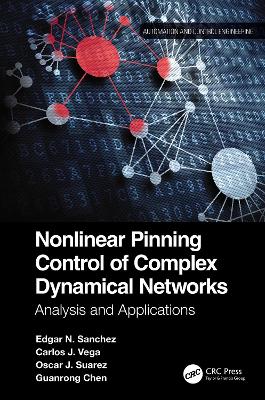Automation and Control Engineering
3 total works
Doubly Fed Induction Generators: Control for Wind Energy provides a detailed source of information on the modeling and design of controllers for the doubly fed induction generator (DFIG) used in wind energy applications. Focusing on the use of nonlinear control techniques, this book:
- Discusses the main features and advantages of the DFIG
- Describes key theoretical fundamentals and the DFIG mathematical model
- Develops controllers using inverse optimal control, sliding modes, and neural networks
- Devises an improvement to add robustness in the presence of parametric variations
- Details the results of real-time implementations
All controllers presented in the book are tested in a laboratory prototype. Comparisons between the controllers are made by analyzing statistical measures applied to the control objectives.
The book presents recent advances in the theory of neural control for discrete-time nonlinear systems with multiple inputs and multiple outputs. The simulation results that appear in each chapter include rigorous mathematical analyses, based on the Lyapunov approach, to establish its properties. The book contains two sections: the first focuses on the analyses of control techniques; the second is dedicated to illustrating results of real-time applications. It also provides solutions for the output trajectory tracking problem of unknown nonlinear systems based on sliding modes and inverse optimal control scheme.
"This book on Discrete-time Recurrent Neural Control is unique in the literature, with new knowledge and information about the new technique of recurrent neural control especially for discrete-time systems.
The book is well organized and clearly presented. It will be welcome by a wide range of researchers in science and engineering, especially graduate students and junior researchers who want to learn the new notion of recurrent neural control. I believe it will have a good market.
It is an excellent book after all."
— Guanrong Chen, City University of Hong Kong
"This book includes very relevant topics, about neural control. In these days, Artificial Neural Networks have been recovering their relevance and well-stablished importance, this due to its great capacity to process big amounts of data. Artificial Neural Networks development always is related to technological advancements; therefore, it is not a surprise that now we are being witnesses of this new era in Artificial Neural Networks, however most of the developments in this research area only focuses on applicability of the proposed schemes. However, Edgar N. Sanchez author of this book does not lose focus and include both important applications as well as a deep theoretical analysis of Artificial Neural Networks to control discrete-time nonlinear systems. It is important to remark that first, the considered Artificial Neural Networks are development in discrete-time this simplify its implementation in real-time; secondly, the proposed applications ranging from modelling of unknown discrete-time on linear systems to control electrical machines with an emphasize to renewable energy systems. However, its applications are not limited to these kind of systems, due to their theoretical foundation it can be applicable to a large class of nonlinear systems. All of these is supported by the solid research done by the author."
— Alma Y. Alanis, University of Guadalajara, Mexico
"This book discusses in detail; how neural networks can be used for optimal as well as robust control design. Design of neural network controllers for real time applications such as induction motors, boost converters, inverted pendulum and doubly fed induction generators has also been carried out which gives the book an edge over other similar titles. This book will be an asset for the novice to the experienced ones."
— Rajesh Joseph Abraham, Indian Institute of Space Science & Technology, Thiruvananthapuram, India
Nonlinear Pinning Control of Complex Dynamical Networks
by Edgar N. Sanchez, Carlos J. Vega, Oscar J. Suarez, and Guanrong Chen
This book presents two nonlinear control strategies for complex dynamical networks. First, sliding-mode control is used, and then the inverse optimal control approach is employed. For both cases, model-based is considered in Chapter 3 and Chapter 5; then, Chapter 4 and Chapter 6 are based on determining a model for the unknow system using a recurrent neural network, using on-line extended Kalman filtering for learning.
The book is organized in four sections. The first one covers mathematical preliminaries, with a brief review for complex networks, and the pinning methodology. Additionally, sliding-mode control and inverse optimal control are introduced. Neural network structures are also discussed along with a description of the high-order ones. The second section presents the analysis and simulation results for sliding-mode control for identical as well as non-identical nodes. The third section describes analysis and simulation results for inverse optimal control considering identical or non-identical nodes. Finally, the last section presents applications of these schemes, using gene regulatory networks and microgrids as examples.


